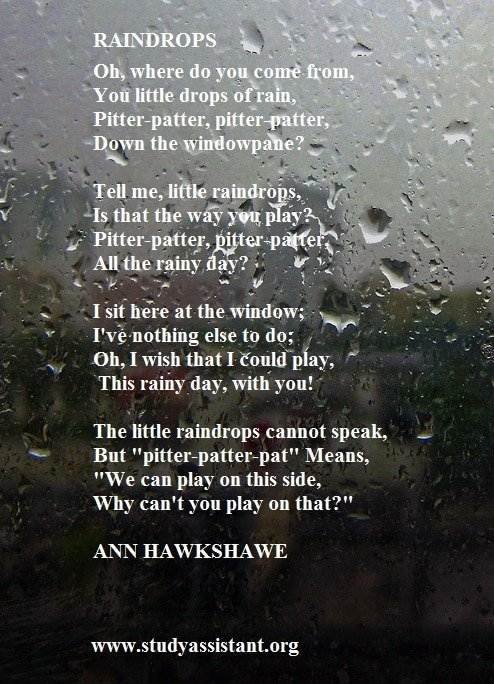Contents
Imagery
You begin to understand poetry with imagery. Read or listen to the poem “Daffodils” by William Wordsworth (1770-1850). Note how the poem appeals to your sense of sight, hearing, smell, taste and touch.

Daffodils
by William Wordsworth
I wandered lonely as a cloud
That floats on high o’er vales and hills,
When all at once I saw a crowd,
A host, of golden daffodils;
Beside the lake, beneath the trees,
Fluttering and dancing in the breeze.
Continuous as the stars that shine
And twinkle on the milky way,
They stretched in never-ending line
Along the margin of a bay:
Ten thousand saw I at a glance,
Tossing their heads in sprightly dance.
The waves beside them danced, but they
Out-did the sparkling waves in glee:
A poet could not be but gay,
In such a jocund company:
I gazed’and gazed’but little thought
What wealth the show to me had brought:
For oft, when on my couch I lie
In vacant or in pensive mood,
They flash upon that inward eye
Which is the bliss of solitude;
And then my heart with pleasure fills,
And dances with the daffodils.
Imagery helps you create pictures and sound in your mind as you read the poem.
What images did you see when you read the poem “Daffodils”? Did you see anything? Did the poem appeal to your sense of touch? Did you find the poem refer to any action or movement? If you close your eyes, could you think of any thing you smell while you read the poem? Or, how about the taste of things? Discuss this with your teacher. Imagery in poetry brings the poem alive.
Meter, Rhythm, and Rhyming
A poet uses meter, rhythm, and rhyming in poetry. Meter is the recurring pattern of stressed and unstressed syllables in lines. The repetition of these stressed or unstressed syllables produces a musical quality, referred to as rhythm or beat. Rhythm is the sound pattern of a poem.

Poet uses rhyming words to unify ideas in the poem. Words rhyme when they sound alike, example sing, ringe. This is a perfect rhyme. However, words with stress syllable that sounds alike can also rhyme (example: years and yours. They are called slant rhymes.

Mood And Tone
We can understand poems by examining its mood and tone. Tone conveys attitude, mood, emotion, and voice.
Thus, a work can be formal or informal, sober or whimsical, assertive or pleading, straightforward or sly. You have to examine the words the poet uses to understand tone.

Worksheets
List of Poetry
- The Tale of Custard the Dragon
- The Little star
- If – Rudyard Kipling
- How Do I Love The – Elizabeth Barrett Browning
- So, We’ll Go No More A-Roving – Lord Bryon
- The Road Not Taken – Robert Frost
- Poems by William Blake
- Poems by Eugene Fields
- Poems by Robert Louis Stevenson
- Poems by Leigh Hunt
- Sea Fever – John Masefield
- The Pied Piper of Hamelin – Robert Browning
- Raven by Edgar Allen Poe
- Bells by Edgar Allen Poe
- Gathering Leaves – Robert Frost
